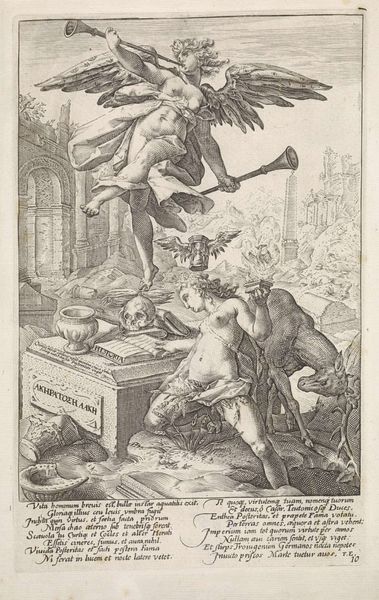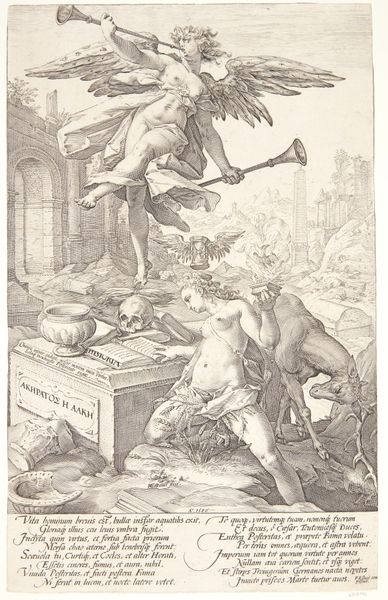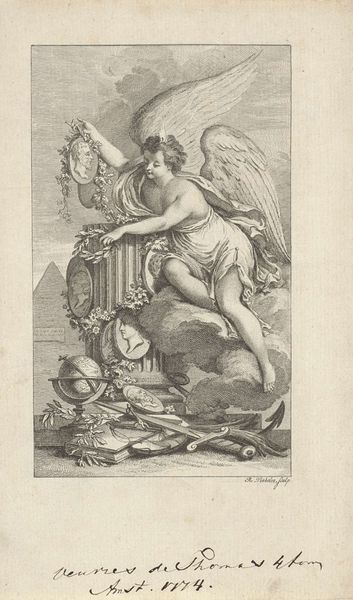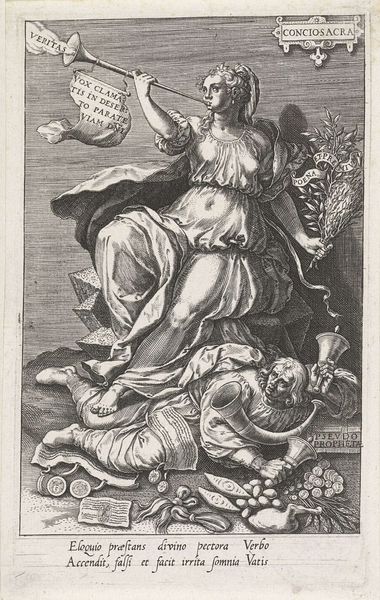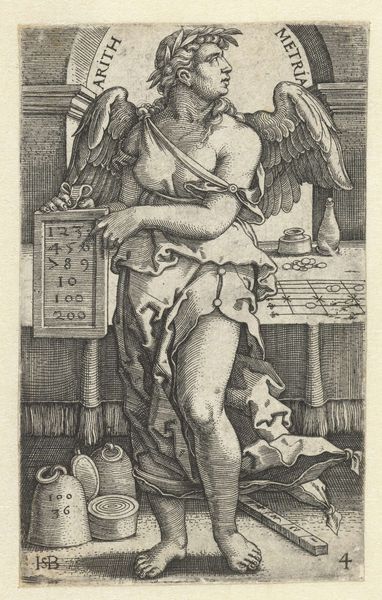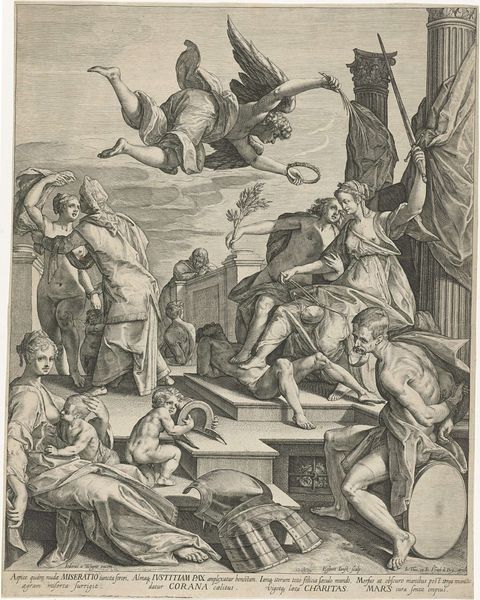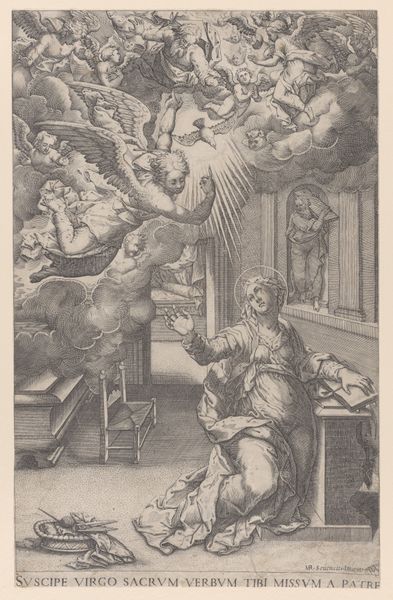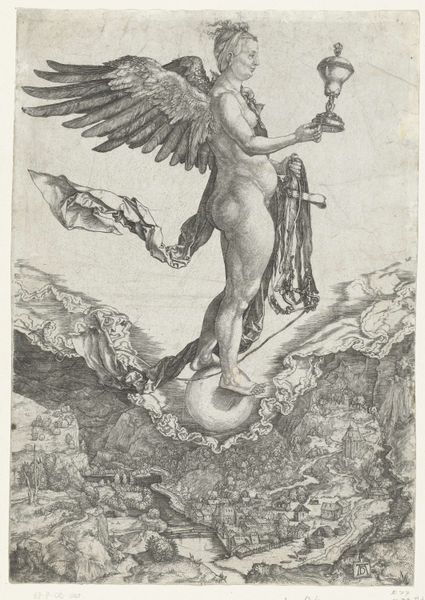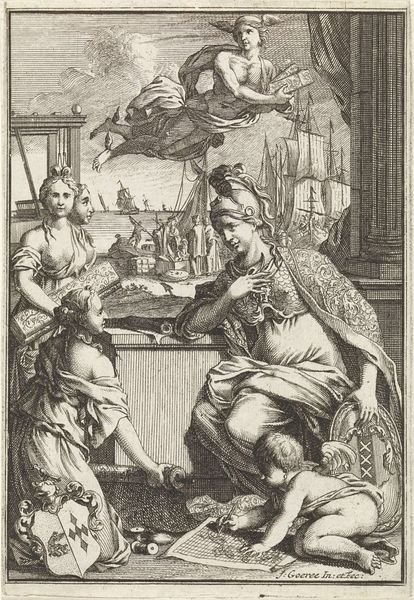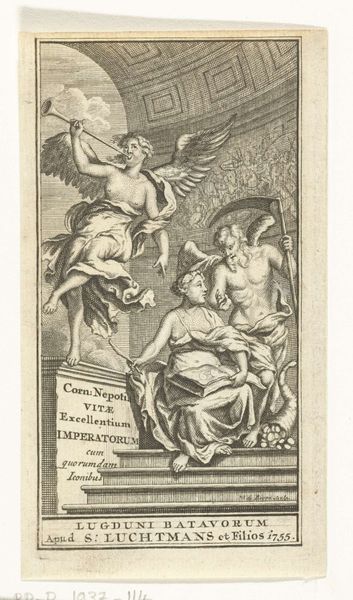
engraving
#
allegory
#
baroque
#
figuration
#
line
#
history-painting
#
engraving
Dimensions: height 321 mm, width 232 mm
Copyright: Rijks Museum: Open Domain
Curator: Today we’re examining "Faam en Historie," or "Fame and History," an engraving possibly created between 1602 and 1629 by Lucas van Haelwech. What’s your initial reaction to this piece? Editor: Stark. The scene is so rigidly rendered—the high contrast creates a severe, almost unsettling mood despite the apparent allegory of triumph. The linear composition adds to that feeling; there's a lack of softness or real dynamism. Curator: Indeed. The line work is meticulous, lending a distinct crispness to the composition. Notice how the artist has constructed the forms—the strategic use of hatching and cross-hatching articulates volume and shadow in the figures, most notably in the triumphant, winged figure above and the seated woman below, presumably representing history. Editor: But it’s more than just technical skill at play here. Look at the elements combined. Fame is depicted literally blowing her own horn while stepping on a prone figure, perhaps a defeated rival? The imagery borders on the politically charged. It almost feels like a commentary on whose history gets remembered, or more precisely, who gets to write it, regardless of justice. Curator: Your point resonates, and it makes sense in its era. Consider the iconography surrounding History here; the open book, the skull nearby – these are standard symbols alluding to mortality, memory, and knowledge. This juxtaposition of Fame and History implies the power and influence one wields over the other in legacy. It asks us, in essence, how accurately Fame will transmit this History to the future? Editor: And I keep coming back to that contrast in the composition. Fame, soaring and radiant, set against the weight of history’s reminders of mortality and its implications of fallibility. It creates a compelling tension. Whose stories do we tell, and who are we forgetting or silencing? The symbols presented offer both critique and opportunity. Curator: That tension really adds layers. Van Haelwech encourages a visual debate about these values, even centuries later. Editor: Precisely. Even within the constraints of the line and the formality, that fundamental questioning continues to reverberate.
Comments
No comments
Be the first to comment and join the conversation on the ultimate creative platform.
